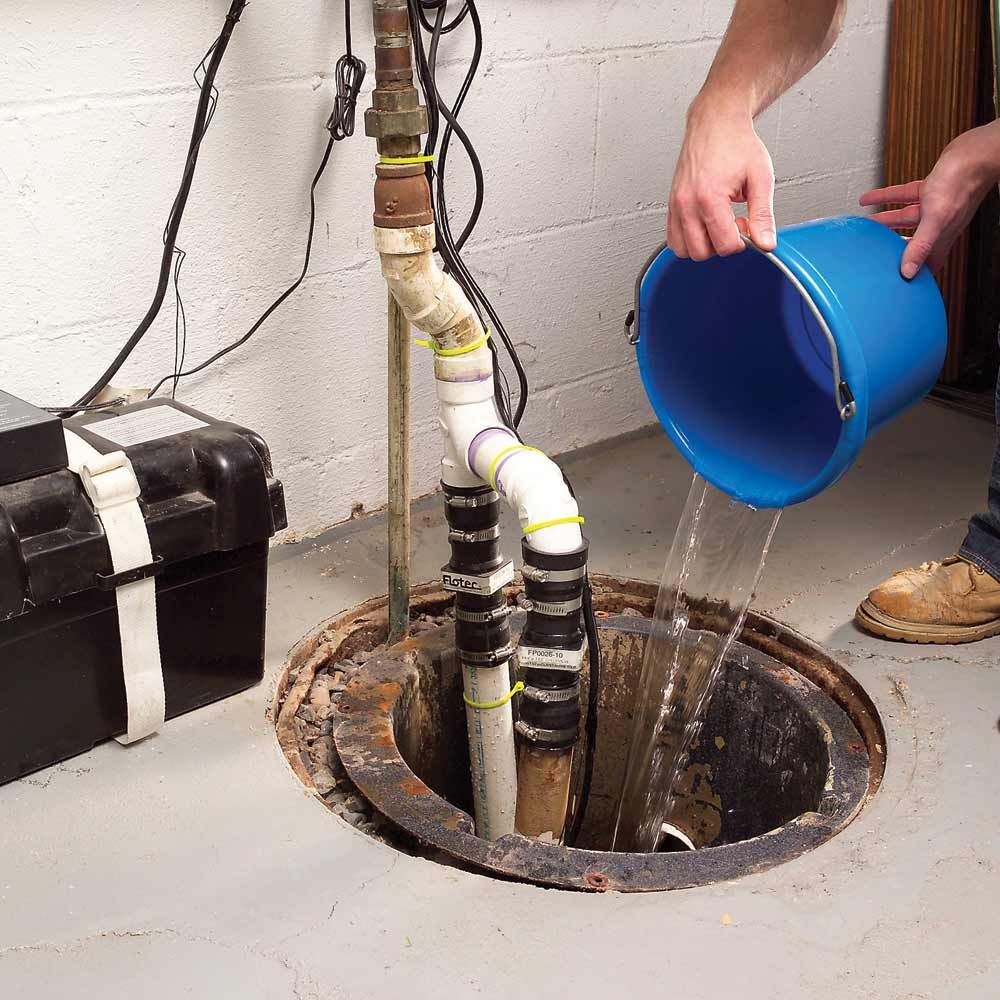What're your thoughts on Steps to Cleaning Your Sump Pump Properly?

Sump pumps are vital parts in numerous homes, particularly in locations prone to flooding or extreme dampness. They help protect against water damage by efficiently removing excess water from basements or crawl spaces. Nevertheless, like any other device, sump pumps call for normal upkeep to ensure they function successfully when required one of the most. Cleaning your sump pump is a vital part of its maintenance, and recognizing just how to do it effectively can conserve you from expensive repairs and potential calamities.
Introduction
Preserving a clean sump pump is important for its proper performance and long life. Neglecting this necessary job can lead to obstructions, breakdowns, and eventually, water damage to your residential property. Therefore, discovering how to cleanse a sump pump is vital for homeowners who depend on these gadgets to keep their basements completely dry and safeguarded.
Indicators of a Dirty Sump Pump
Recognizing when your sump pump requires cleansing is essential for avoiding potential malfunctions. Some common indications that suggest a dirty sump pump include strange sounds during operation, minimized water circulation, and visible debris in the pit. If you notice any of these symptoms, it's necessary to cleanse your sump pump quickly to prevent any type of further issues.
Preparing for Cleansing
Prior to you start cleansing your sump pump, it's essential to take some safety and security preventative measures. Start by turning off the power to the pump to stay clear of any kind of electrical mishaps. In addition, use ideal safety equipment, such as gloves and safety glasses, to safeguard yourself from dust, particles, and possible virus.
Recognizing the Sump Pump
Before diving right into the cleaning process, it's necessary to have a basic understanding of just how a sump pump functions. Commonly installed in a pit or container listed below the cellar flooring, a sump pump includes numerous essential elements, including a pump, a float button, and a discharge pipeline. When water collects in the pit, the float button triggers the pump, which then pumps the water out with the discharge pipe, far from the building's foundation.
Detailed Guide to Cleaning a Sump Pump
Shutting Off the Power
Begin by disconnecting the power supply to the sump pump to stop any type of crashes while cleansing.
Looking For Correct Performance
Prior to reinstalling the pump, do a quick test to guarantee that the float switch turns on the pump appropriately. Pour some water into the sump pit and observe the pump's operation. If whatever is functioning appropriately, you can reconstruct the pump and reconnect the power supply.
Removing Debris and Dirt
Make use of a bucket or an inside story to get rid of any noticeable debris, dust, or debris from the sump pit. Dispose of the particles appropriately to avoid it from clogging the pump or the discharge pipeline.
Cleansing the Pump and Float Switch
As soon as the pit is free from debris, carefully eliminate the pump from the pit. Inspect the pump and the float button for any type of indications of damages or wear. Utilize a soft brush or towel to clean the surfaces and eliminate any type of accumulated crud.
Purging the System
After cleaning the pump and float button, flush the sump pit with clean water to remove any staying dirt or sediment. This will help guarantee that the pump runs efficiently and effectively.
Maintenance Tips to Maintain Your Sump Pump Clean
Along with periodic cleansing, there are numerous maintenance tips you can comply with to keep your sump pump in ideal condition:
Final thought
Cleaning your sump pump is a vital aspect of its maintenance and makes certain that it runs efficiently when you need it the most. By complying with the steps detailed in this overview and including regular upkeep right into your routine, you can extend the lifespan of your sump pump and secure your home from water damages.
How To Inspect And Clean A Sump Pump
There are a few things you may want to look for when inspecting your sump pump. These include:
Leaks: If you notice any leaks around the sump pump, it likely needs to be repaired or replaced. Mud or Water: If there is any mud or water around the sump pump, it’s likely that it’s not working properly and needs to be cleaned. Noises: If you hear any strange noises coming from the sump pump, it may be indicative of a problem. Next, you’ll need to clean the sump pump. If you notice any of these issues, it’s best to clean the sump pump as soon as possible. To do this, you’ll need to remove the pump from its housing. Be sure to have a bucket handy to catch any water that may spill out. Once the pump is removed, use a brush or a spray nozzle to clean off all of the mud and debris. You may also want to check the impeller for damage or wear and tear. If you find any damage, you’ll need to replace the pump.
Once the pump is clean, reattach it to its housing and replace any parts that were removed. Be sure to test the pump before putting everything back in place. Once everything is back in order, put the cover back on the sump pit and refill it with water.
https://elekplumbing.com/blog/how-to-inspect-and-clean-a-sump-pump/

I'm very involved in Steps to Cleaning Your Sump Pump Properly and I'm hoping you enjoyed reading the entire piece. For those who enjoyed our blog post please don't forget to share it. Thanks for your time. Kindly pay a visit to our site back soon.
Free Estimate